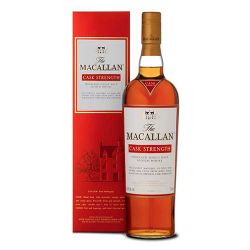I received an email from Laphroaig about two weeks explaining a new Scotch Whisky Association rule that requires all cask strength single malt Scotch whiskies to display a bottling date and batch number on each bottle. Laphroaig used to bottle all their cask strengths at 55.5% ABV but with the new rules, they’ll be bottling each batch individually with varying strengths and expressions. Since the cask strengths will no longer be blends of several casks, each will have slightly more distinction from bottling to bottling.
I’m not entirely sure why the rules were changed but it’ll certainly add a small little twist to each, here are the stats of Batch #1 of Laphroaig’s Cask Strength:
Batch 1 Facts
ABV: 57.8%/115.6 proof
Batch Date: February 2007
Tasting Notes: A full blast of massive peat smoke and seashore salt leads to a fading sweetness at the finish.
Batch Quantity: 5,100 bottles


